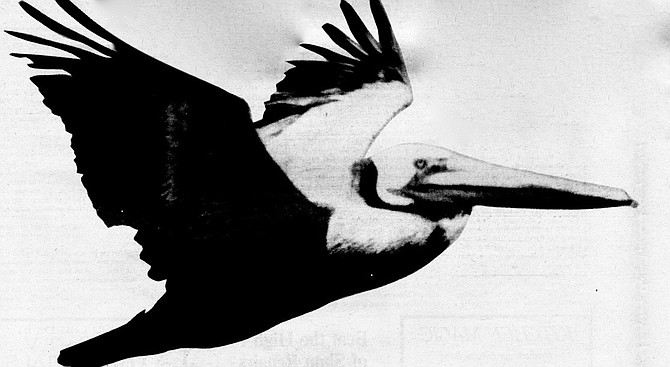
"I'm enthralled by creatures with wingspans so wide that they seem to wobble when they beat."
- I’m not sure why the birds on the north island of the Coronados are making such a racket. They're screaming so loudly it seems like the noise should carry to Point Loma, fifteen miles away; the cacophony sounds like the bawling of a hundred angry human infants. From a boat, even just a few hundred feet offshore, the birds blend into the mottled cliff side of the island, a forbidding lump of rock that rises precipitously from the sea.
- By Jeannette DeWyze, April 19, 1979
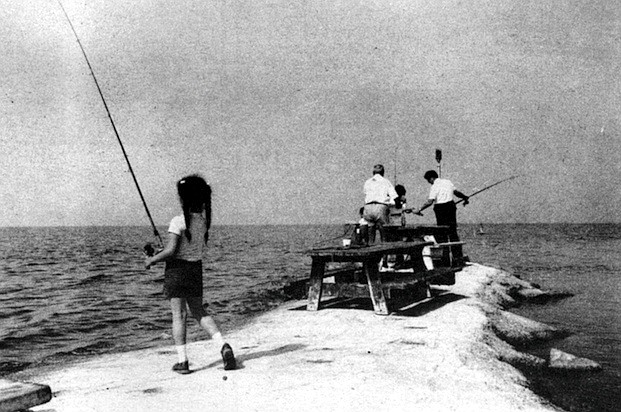
“The irrigation water brings with it a lot of nutrients, and this is why the fish grow so fast.’’
- From the top of Mount Laguna you can sometimes catch a glimpse of the Salton Sea, glistening off in the east like a desert mirage. It doesn’t seem to belong there; it somehow doesn’t seem real. If you take the fifty-mile drive down the Banning Grade from the crest of the Lagunas to the shore of the Salton Sea, you’ll see the land around you change faster than a rock slide.
- By Steve Sorensen, April 12, 1979

Ohkawa: "If you’re talking about when I do my best scientific work, probably it’s sometime when I’m asleep.”
- Ohkawa's specialty is magnetic bottles, containers whose “walls” are magnetic fields. As the head of General Atomic’s controlled fusion research program, he has been working for the last twenty years to solve one of the most elusive riddles of modem physics; the controlled conversion of hydrogen into helium, a process which heretofore has taken place only in the middles of stars.
- By Gordon Smith, March 22, 1979
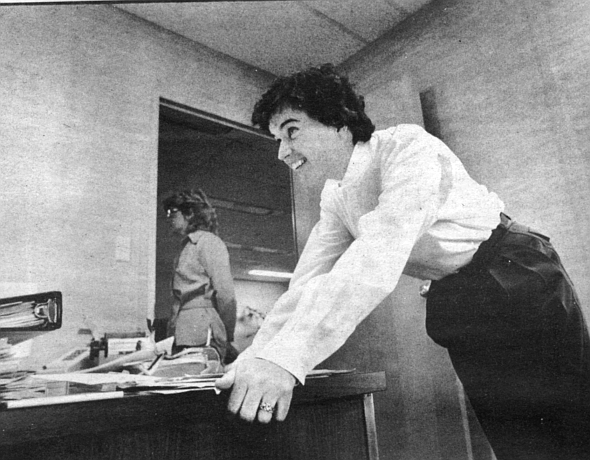
O'Connor: "My personal, private, daily life is like their [the public’s] personal, private, daily life. It’s personal.”
- Once upon a time there was a freckle-faced little girl named Maureen who lived in Mission Hills. She had twelve brothers and sisters, and though her parents didn’t have much money, they boasted that instead they all had plenty of love. Maureen had a happy childhood, and she decided to spend her life helping other people. She wanted to become a teacher when she grew up, and she become one.
- By Jeannette DeWyze, March 8, 1979
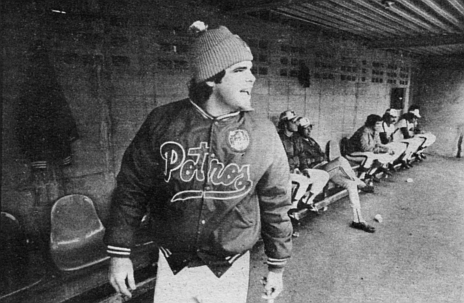
Mark Wiley: "The pay down here isn’t bad."
- Down in the dressing room, members of Tijuana's home team, Los Potros (“Colts”), begin to arrive in twos and threes. They are relaxed and smiling—with seven games left in the season they have already clinched first place in their division. Shouts and jibes in Spanish fill the room, for most of the players are Mexican natives. But here and there a few Americans can be seen.
- By Gordon Smith, Jan. 25, 1979

At the community concourse, Jones installed devices to keep track of where the cars were parking.
Photo by Robert Burroughs
- On the afternoon of the All-Star baseball game in July, Evan Jones was standing on top of one of those pedestrian towers that corkscrew up the side of San Diego Stadium. Jones is the owner and president of Ace Auto Parks and a couple of other companies that control the stadium’s lot, and most of the rest of San Diego’s publicly owned parking.
- By Joe Applegate, Nov. 22, 1979
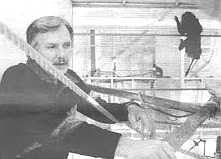
Don Linberg: "The biggest obstacle may be human reluctance to put the good of the species above individual zoos’ own programs.”
Photo by Robert Burroughs
- He talks about his commitment to animal reproduction in personal terms. “We have too many people, and we’re killing the wildlife,’’ he says flatly. “I feel very strongly that the reason why we have so many people is because we understand human reproductive physiology. . . . I feel it’s time we translate this to the other species that we ’re in the process of rubbing out.”
- By Jeannette DeWyze, Nov. 15, 1979
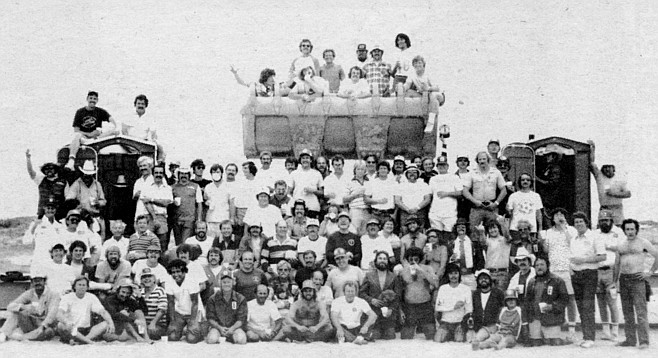
OMBAC 1978. "The problem with OMBAC is they think that if something’s fun with ten people, it’ll be ten times as fun with a hundred people."
- Chuck Millenbah, bottle of Bud in hand, calls the OMBAC board meeting to order. Scattered around a small back room in the Pennant Bar in South Mission Beach, the board of directors — seven men ranging in age from their late twenties to midforties, all clutching a Bud, Lite, or rum and Coke — tone down their jabbering long enough for Millenbah, president of the Old Mission Beach Athletic Club, to call for the treasurer’s report.
- By Neal Matthews, Nov. 1, 1979
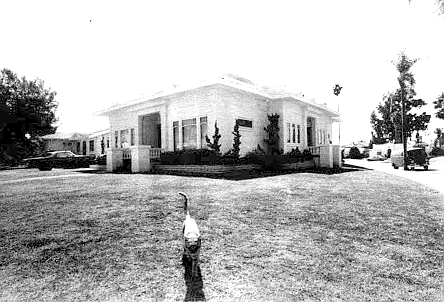
At the comer of Laurel and Capitan the Morgue house dominates the whole area.
- There was nothing out there then but sage brush and the few unpaved streets that would eventually lace together the 208 houses, give or take a couple, that exist there now — streets such as Pamo and Maple. Laurel, Kalmia. and Burlingame Drive. The district was bounded by Thirtieth and Thirty-second streets running north and south, and San Marcos and Kalmia streets running roughly cast and west. But just in case anyone should forget these boundaries, the planners of the neighborhood demarcated it with rose-colored sidewalks.
- By Neal Matthews, Oct. 4, 1979
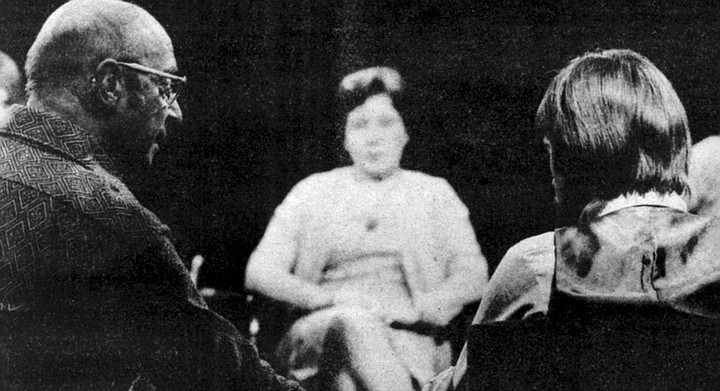
Empathetic listening remains one of the key concepts with Rogers.
- Not long after Rogers accepted an invitation to join the staff of La Jolla’s Western Behavioral Sciences Institute in 1964, San Diego buzzed with talk of T-groups (training groups), sensitivity training, encounter-group workshops. In time, the entire state and beyond seemed tuned to the vibrations emanating from the Silverado Street buildings. It was surely an improvement to say “I feel” rather than “I think,” and “I can relate” rather than “I believe. ”
- By Eleanor Widmer, Aug. 9, 1979
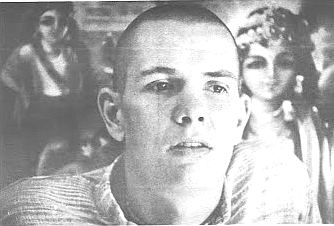
Badri Narayan das, the temple president, counts between 400 and 500 members in San Diego County.
- The big, drunk Chicano in Horton Plaza who tried to rip off my Hare Krishna gown got to me so quickly I never even saw him coming. By the time I realized what was happening, he had unwrapped the orange and maroon sari from my head. As he tore at it, his glazed, bloodshot eyes mocked me.
- By Jeannette DeWyze, July 12, 1979
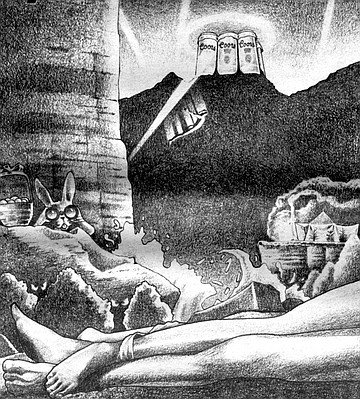
At some time, very late at night, somebody plays an old tape of Jim Morrison and the Doors. They turn it up so loud that it drowns everything else out.
- Easter at the Colorado River is like a holy pilgrimage for those who believe. They pour out of the hot cities of Southern California in endless caravans, crossing the mountains and deserts, enduring the merciless heat, suffering robbery at the hands of the Bedouin gas merchants, forging onward through the savage regions of Brawley, Indio, and Blythe. They come in hordes, following an internal clockwork which tells them it‘s time to gather on the cool banks of the sacred Colorado.
- By Steve Sorensen, May 3, 1979
 Facebook
Facebook
 X
X
 Instagram
Instagram
 TikTok
TikTok
 Youtube
Youtube
























